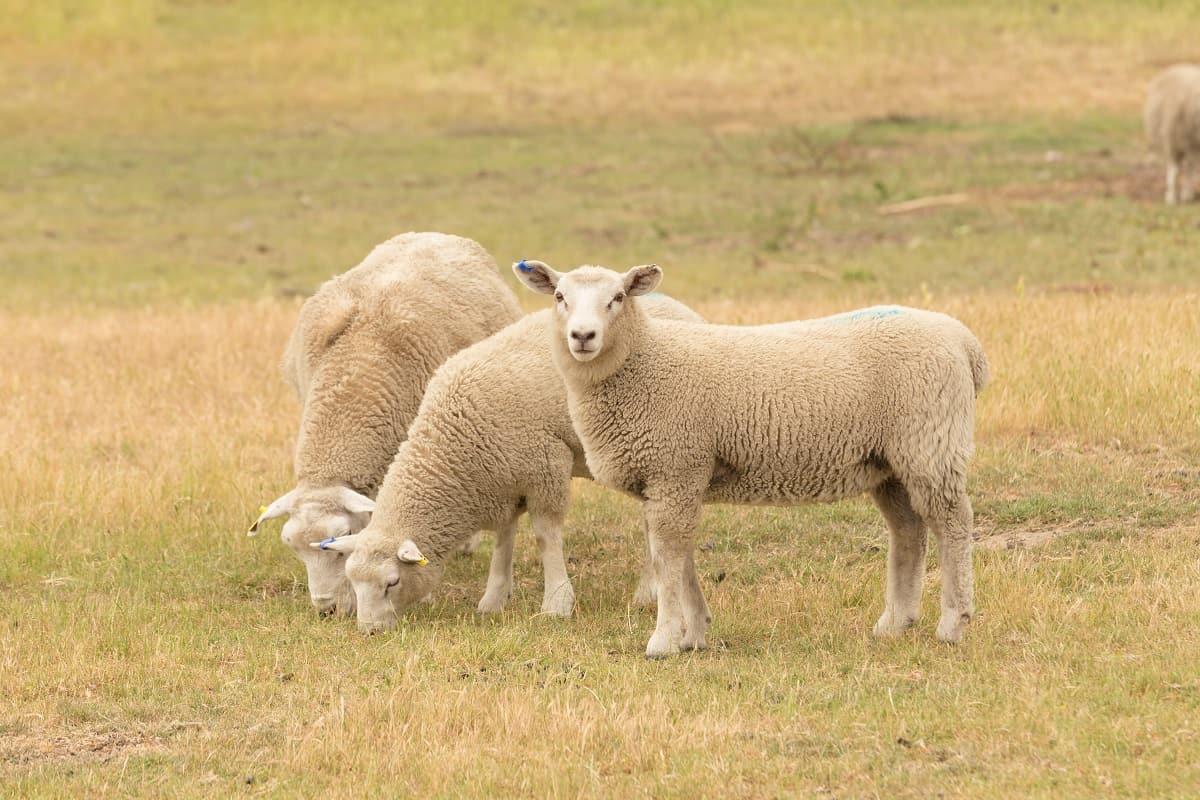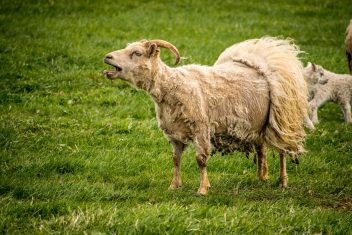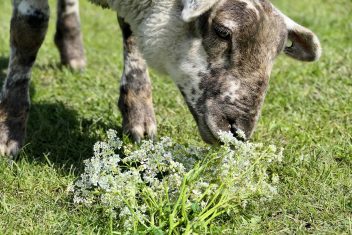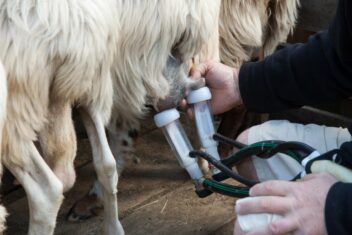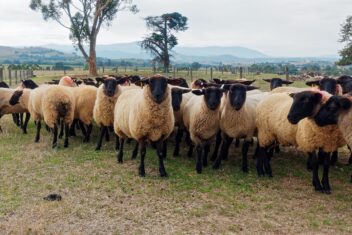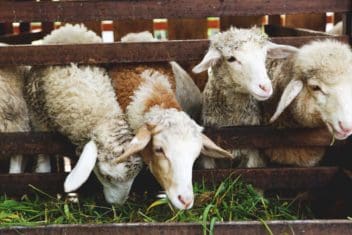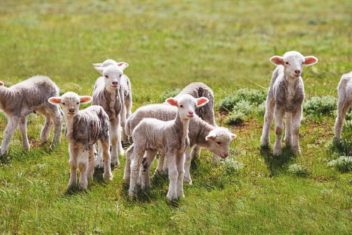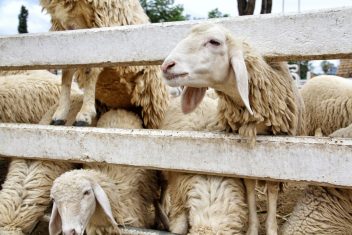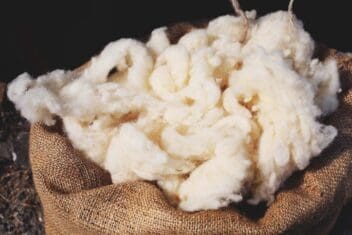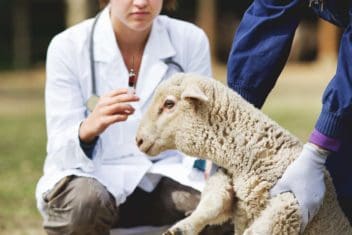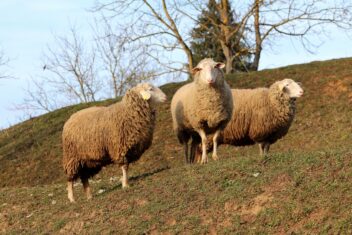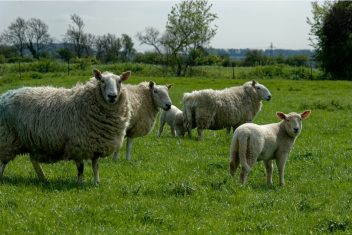We recently picked up our last batch of lamb from the local USDA slaughterhouse. While we were happy to see that our lambs weighed significantly more than they did last year when we brought them to the butcher, we were still disappointed to see that they didn’t tip the scales quite as much as we wanted them to.
Many people slaughter their own lambs for meat. We take ours to a slaughterhouse that is inspected since we sell much of our extra meat to a local restaurant. The slaughterhouse we use charges a flat rate for butchering lambs up to 49 pounds – and to date, we haven’t reached that threshold yet.
It’s something that we aspire to do, but it’s a delicate balance. When it comes to putting weight on your animals, whether they’re sheep or pigs or anything else that you might be raising on the farm, it’s hard to put on lean weight versus fat.
You also don’t want to spend a lot of money feeding your animals with expensive feeds (or lots of them) to put on weight, because this is simply not cost-effective, nor is it a good use of time or healthy for the animal, in many cases.
However, there are some tips you can follow to put weight on market lambs – the right way. Here’s what you need to know.
Differentiate Between Fat and Weight
Bringing your lamb (or sheep, if you are interested in mutton) up to market weight is a tricky endeavor, one that requires mastering a certain balance.
Lots of people refer to putting weight on their animals as the process of “fattening them up.” However, this is a misnomer. Putting fat on your lambs won’t do you any good. Not only will an overfat animal not taste good, but it won’t be as valuable when you go to sell it.
In many cases, the fat that is trimmed from the carcass is simply discarded – yet most slaughterhouses still include it in the weight of the animal, which you are ultimately charged for.
Instead of putting fat on your sheep, it’s more important that you focus on building muscle and helping them gain a healthy amount of weight. When done properly, this can also help you avoid the many health problems that are associated with overfat animals.
7 Tips for Putting Weight on Sheep for Slaughter
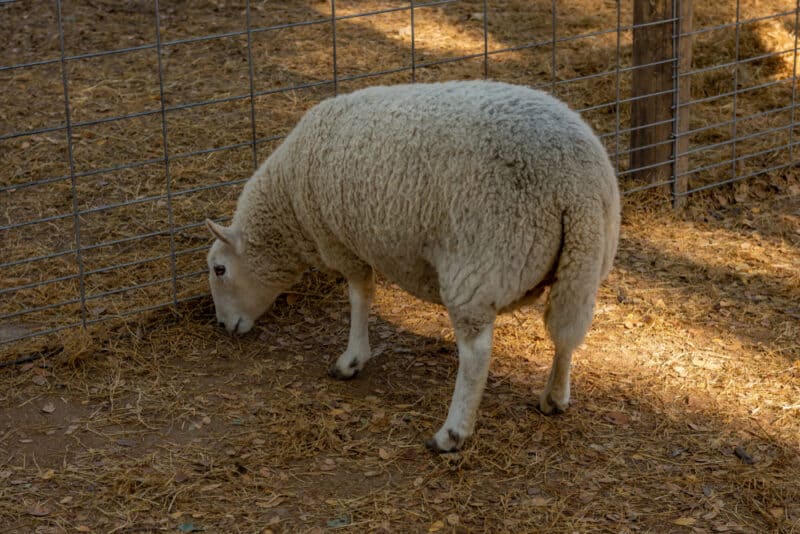
1. Increase Grain Rations
You don’t want to choke feed your lambs, but you may find that gradually increasing grain rations, especially when it’s close to slaughter time, can help get them put on weight.
Keep close track of how much you are feeding. Too much grain can lead to overfat lambs. It can also stress your lamb or upset its young digestive system. Introduce changes slowly, perhaps adding just a quarter of a pound over the course of a week.
In addition to upping grain rations, you can also similarly increase hay or roughage allotments. Providing lambs access to free-choice hay is usually safe, as this will allow them to eat their fill without making you worry about overfeeding them.
2. Weigh Your Lambs Weekly
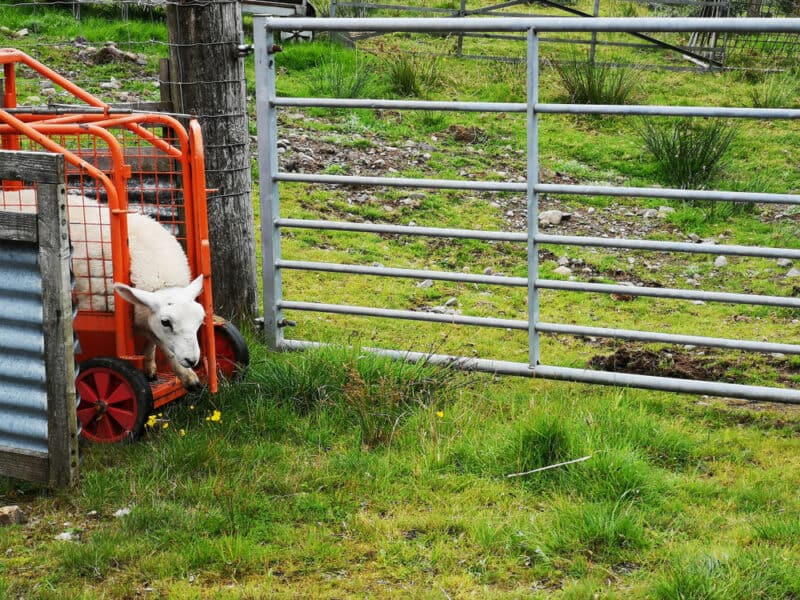
Closely monitor your lamb, weighing it weekly when possible. Do this in the morning before feeding and keep track of daily and weekly gains. If the lamb is falling short, it may be a good idea to consider why. You may have to change around your housing facilities to give your sheep more room, make a change in the feed quantity or composition, or treat a certain health concern.
In addition to monitoring your lamb’s weight to make sure it’s increasing, it’s also a good idea to note when a sheep might be getting too big. This could also indicate a health problem and you may need to start rationing.
3. Add Probiotics
Adding a probiotic supplement to the feed or water of your lambs is a great idea. You can use an all-stock solution like Rooster Booster B12, which will add essential vitamins, too.
Probiotics will aid in your animals’ digestion as they are getting used to larger quantities of feed and can also help them put on muscle. There is some evidence that probiotics and para-probiotics might help combat infections and intestinal parasites, too.
4. Provide Plenty of Water
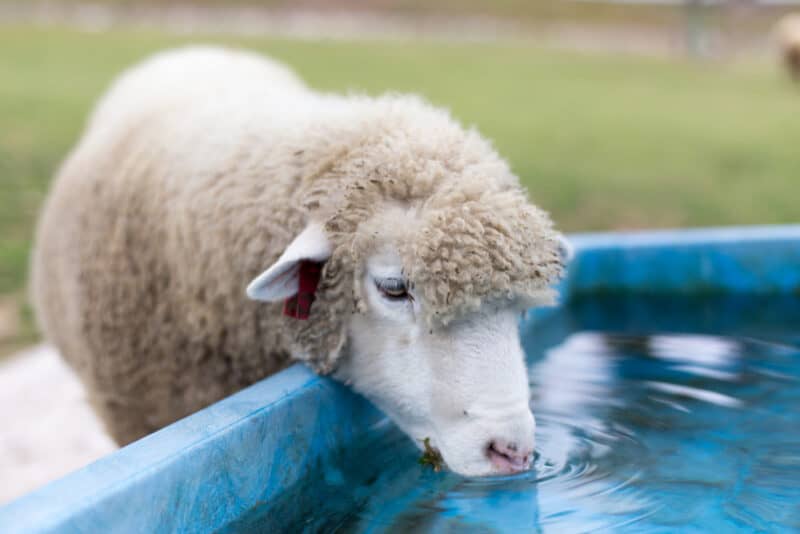
Your sheep won’t eat as much if they’re thirsty – that’s true even in the winter. Some sheep farmers swear by only giving their sheep snow to eat instead of water in the wintertime, but I wouldn’t recommend this if you’re trying to put weight on your animals.
Not only will your lambs burn more calories trying to heat the snow when they eat it, but it may be more physically challenging for them to eat hard-packed snow than to simply drink a few mouthfuls of water.
5. Use a High Quality Forage
When running your sheep out on pasture, rotate them often and use a high-quality forage. Some of the best-harvested forages include legume-grass silage, haylage, corn silage, and best of all, alfalfa.
You may also consider planting species that are well-suited to sheep grazings, such as orchardgrass, tall fescue, timothy, and perennial ryegrass.
6. Don’t Forget to Supplement and Vaccinate
Attend to the health of your sheep before you start worrying about why they aren’t gaining weight. There are many different health problems, both chronic and acute, that can limit a lamb’s chance for good growth.
Keep a good track of your flock’s history. Note vaccinations and booster vaccinations that were administered, medications delivered, and treatment for internal and external parasites. Remember, sheep are famous for being prone to internal parasites. Often, their only symptom of a parasitic infestation is a failure to put on weight. Deworm regularly and check your sheep for parasites as often as you can.
Vaccination is sometimes necessary, depending on where you live and what diseases are common in your area. CDT is the only universally recommended vaccination for sheep, so it’s important that you administer this one to prevent the disease from claiming lives and reducing the growth rate of your lambs.
Otherwise, the only other thing you absolutely have to do is to make sure your lambs are given mineral supplementation. Provide a trace mineral salt that is formulated specifically for sheep. Using one that is for goats or other kinds of livestock can be detrimental and even deadly, as it contains copper (to which sheep are sensitive).
You should make sure minerals like selenium, calcium, and phosphorus are all present in the diet of your lambs.
7. Make Sure Parasites Aren’t a Factor
Internal parasites are incredibly common in sheep. Make sure your sheep have been dewormed and are treated often to rule this out as a potential issue.
Run your sheep on fresh pasture whenever possible, never letting them completely graze down a section of pasture, to prevent them from acquiring parasites in the first place.
Other Ways to Help Your Sheep Stay Healthy
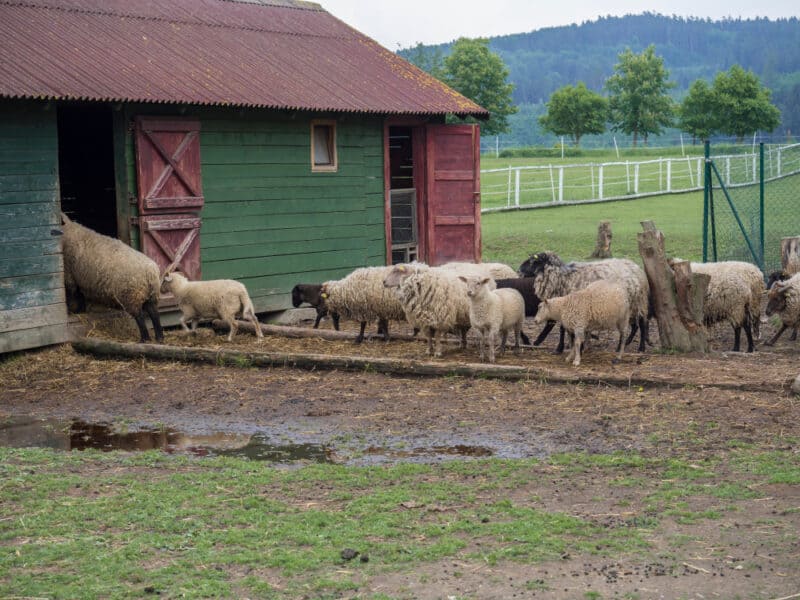
You must attend to your lamb’s basic needs before you start considering how to put on weight. Make sure your sheep have adequate shelter that encourages their growth.
While most sheep will happily live outside for 12 months of the year, they still need shade and shelter from precipitation and the extreme heat and cold. If they’re spending all their energy trying to stay warm, they aren’t going to be putting on weight the way you want them to. Other conditions to provide include good ventilation and adequate pen space.
Make sure your sheep get plenty of exercise. A common mistake that many sheep farmers make is assuming that too much exercise will make their sheep too thin. While that might be true for the ultramarathoners among us, it is not the case for most animals. Exercise will help keep your sheep healthy and it can improve their muscle content, leading to leaner, finer-tasting meat.
Exercising your lambs in the few months before slaughter (ideally early in the morning or later in the evening, when it’s cooler) will also help them build muscle and gain weight. It can harden the back fat, too, leading to better quality meat.
Ultimately, keeping your sheep healthy is the best way to increase their weight and get them ready for market. After all, a sheep that’s plagued with health issues, from internal parasites to coccidiosis, isn’t going to gain weight well – and it’s not going to be a happy animal, either.
Pay attention to improving your animal husbandry skills, and you’ll likely find that, in time, you’ll be able to put weight on your sheep – the right way.
